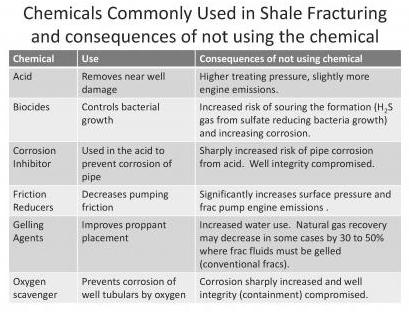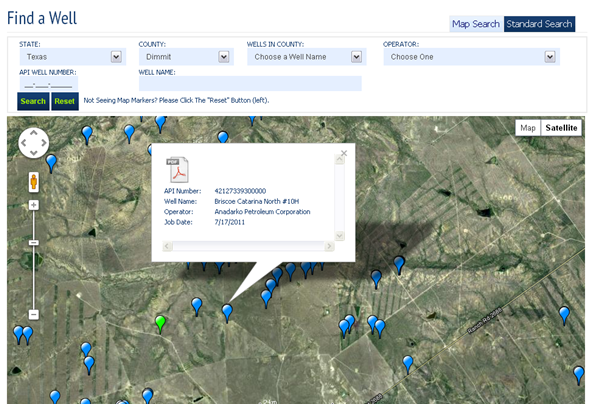Hydraulic fracturing or “fracking” – a method for extracting natural gas from shale formations deep below ground – is currently a topic of frequent discussion.
So what exactly is fracking?
This video explains the basics of the process:
As you can see, the drilling technique used for fracking is a marvel of modern engineering. But drilling the shaft is only part of the extraction process. There is also an assortment of chemicals deployed to extract shale-embedded gas.
There is an ongoing debate about the long-term effects of the chemicals used in fracking and other potential hazards, such as groundwater contamination. The chart below provides an overview of what types of chemicals are commonly used by operators, the role that each chemical plays, as well as the reason these specific chemicals are used.
According to FracFocus, “Chemicals serve many functions in hydraulic fracturing. From limiting the growth of bacteria to preventing corrosion of the well casing, chemicals are needed to insure that the fracturing job is effective and efficient.”
FracFocus is a chemical disclosure registry that publishes the chemicals used to frack oil/gas wells in plays across the country. FracFocus provides a web viewer that allows users to search for wells that have been hydraulically fractured and identify chemicals that were used by operators. It is important to note that operators who submit information do so voluntarily. Currently there are over 30,000 hydraulically fractured wells in the database. Not only can you search and view wells on a map (shown below), but you can also download PDF files for each well that list the various ingredients and chemicals used for that well. Access the FracFocus web viewer here.
Operators seeking to frack new wells have a responsibility to be aware of potential environmental concerns that can result from their activities. While identifying endangered species, hazards, and receptors in the area are all vital to ensuring an environmentally safe operation in accordance with regulatory compliance, identifying all active and plugged oil and gas wells in the vicinity is also a critical aspect of due diligence. It is possible that a newly fracked well could unknowingly be drilled in close proximity to an older, discontinued well. In some instances an older well’s casing may have been compromised and the well not successfully plugged. Such wells could be susceptible to infiltration by the nearby fracked well and must be identified prior to drilling in order to maintain well efficiency and the safety of surrounding areas.
Jordan Schmidt 
Editor
jschmidt@banksinfo.com



Pingback: Proposed rule changes for hydraulic fracturing in Texas - Environmental Prose
What are the Gas and Oil companies trying to hide from the public, by NOT disclosing ALL the chemicals used in Hydraulic Fracturing ( Fracking ). They REFUSE to give a Full list of chemicals being used. WHY? What TRUTH, are they hiding from the public? I WANT TO KNOW! The truth ALL the truth, not sorted truths they are giving.